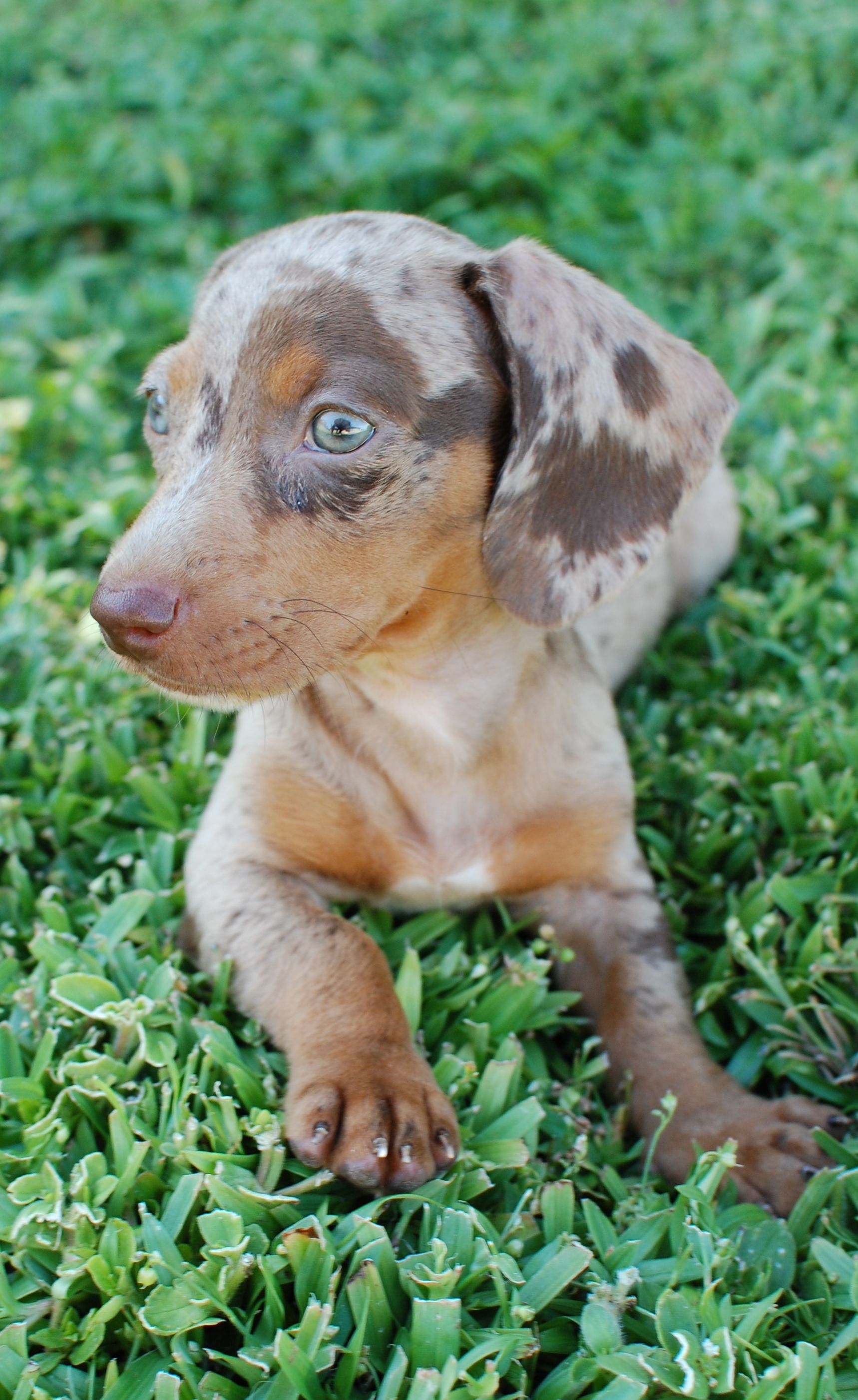The Dachshund breed is famous for its long bodies, short legs, and friendly nature, making it a favorite among dog lovers for centuries. However, within this beloved breed, there’s a unique and captivating variation – the blue dapple dachshund.
In this guide, we’ll explore the world of the blue dapple dachshund, covering its history, genetics, personality, care needs, and the joys and challenges of owning one. Whether you’re a current owner, considering adding a blue dapple dachshund to your family, or simply interested in these beautiful dogs, you’ll find valuable information here.
Contents
- 1 Understanding the Blue Dapple Dachshund’s Coat
- 2 Caring for a Blue Dapple Dachshund: Grooming and Health
- 3 Temperament and Training: The Blue Dapple Dachshund’s Personality
- 4 Finding the Right Blue Dapple Dachshund: Breeder Selection
- 5 Living with a Blue Dapple Dachshund: A Joyful Companion
- 6 Conclusion
Understanding the Blue Dapple Dachshund’s Coat

The blue dapple dachshund’s most striking feature is its coat, which results from the intricate world of canine genetics, involving two dominant genes – the dapple gene and the blue gene.
The Dapple Gene
The dapple gene, symbolized as Dd, creates the distinctive spotted pattern seen in blue dapple dachshunds. It produces areas of darker pigment against a lighter background, resulting in a marbled or mottled appearance. This gene also creates dapple patterns in breeds like Dalmatians and Australian Shepherds.
However, the dapple gene carries the risk of double-dapple syndrome, a genetic condition occurring when a dog inherits two copies of the dapple gene. Double-dapple dachshunds may have larger white fur areas and are at increased risk for health issues like hearing and vision problems and skeletal abnormalities. Responsible breeders screen for this trait and avoid breeding double-dapple dachshunds.
The Blue Gene
The blue gene, also known as the dilute or silver gene, is responsible for the slate-grey color in the blue dapple dachshund’s coat. This gene dilutes the typical black pigment, resulting in a unique and eye-catching color. When combined with the dapple gene, it creates the striking blue dapple pattern.
Blue dapple dachshunds may have shades ranging from light silver-grey to dark charcoal. This variation is normal and adds to each dog’s unique beauty.
Caring for a Blue Dapple Dachshund: Grooming and Health

Regular grooming and proper care are essential for maintaining the health and well-being of blue dapple dachshunds. Here are some key aspects of their care.
Grooming
Despite having longer coats than other dachshund varieties, blue dapple dachshunds require minimal grooming. Brush their coat once or twice a week to remove loose hair and prevent matting. Occasional baths with gentle dog shampoo will keep them clean.
Regular ear cleaning is crucial due to their long, floppy ears, which are prone to infections. Check and clean their ears weekly to prevent issues.
Health
Blue dapple dachshunds are generally healthy with an average lifespan of 12-15 years. However, they are prone to certain health issues, including the risk of double-dapple syndrome. It’s essential to buy puppies from reputable breeders who conduct thorough health screenings.
Other common health problems in dachshunds include intervertebral disc disease (IVDD), which can lead to back problems and paralysis, and obesity due to their long spine and short legs. Regular exercise and a balanced diet are crucial for keeping them healthy.
Temperament and Training: The Blue Dapple Dachshund’s Personality
Blue dapple dachshunds are friendly and outgoing, making them excellent family pets. They are affectionate and thrive on human companionship. However, they have unique quirks that potential owners should know.
Energy and Exercise Needs
Blue dapple dachshunds are energetic and require regular exercise for physical and mental stimulation. Daily walks and playtime in a secure yard are sufficient. Due to their long backs, they should avoid jumping or climbing stairs to prevent injuries.
Socialization and Training
Proper socialization and training are essential for blue dapple dachshunds. As puppies, they should be exposed to various people, animals, and environments to develop into well-adjusted adults. Early obedience training establishes good behavior and prevents issues like excessive barking or separation anxiety.
Finding the Right Blue Dapple Dachshund: Breeder Selection

When purchasing a blue dapple dachshund, research and find a reputable breeder. Responsible breeders prioritize their dogs’ health and well-being, carefully screening their breeding stock for potential health issues.
A good breeder will show you their facilities and introduce you to the puppy’s parents, providing peace of mind about the lineage. They should also provide necessary paperwork, including health records and pedigree certificates.
Due to their unique coat pattern, blue dapple dachshunds are in high demand, leading to an increase in backyard breeders and puppy mills. Avoid purchasing from pet stores or online sellers and choose a reputable breeder instead.
Living with a Blue Dapple Dachshund: A Joyful Companion

Despite potential challenges, owning a blue dapple dachshund can bring immense joy and happiness. These loving and loyal dogs make excellent companions, bringing smiles with their playful antics.
Their small size makes them ideal for apartment living, and they are generally quiet and well-behaved indoors. However, they tend to dig and bark, so provide plenty of toys and mental stimulation to prevent boredom.
Blue dapple dachshunds can also experience separation anxiety if left alone for long periods. If you work long hours or travel frequently, have a care plan for your dog or consider a different breed.
Conclusion
The blue dapple dachshund is a beautiful and unique variation of the beloved dachshund breed. Their striking coat pattern and friendly personalities make them a popular choice among dog lovers. However, thorough research and choosing a reputable breeder are essential to ensure their health and well-being. With proper care and training, a blue dapple dachshund can be a loving and loyal companion for many years.
